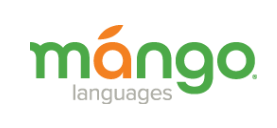It has been a dream of
mine to learn a second language. It was something that was always on my bucket
list but I would think, "I don't have time for that right now!"
It
would stare me in the face, and was a shame that would follow me on travels. I
would frequently run across people on my international travels that speak 3-5
languages. I would sit there and feel like an ignorant American.
Well the time for that
is no more! I decided that I would take advantage of today's technology
and learn a language on my downtime. I didn't want to spend a lot of money, as
it wasn't realistic that I can spend hundreds on a class or Rosetta Stone.
Without the structure of a classroom, I was lost on where to start! Below
are tips and suggestions I have found helpful.
1.
Choose
a Language First: Before you start
anything, choose a language you are excited about first. There is no point in
downloading multiple apps and trying to find people to practice with, if you
aren't sure what language you are wanting to learn. Also if you are learning a
language just to cross something off your list, then you won't be passionate
about it, and you won't finish your goal. For me, I choose to learn Arabic, as
my husband is fluent and I can surround myself with the language. This
gave me a purpose for learning and a constant reminder and passion for
continuing my self-education.
2.
Find
the Right App: There are several
language learning apps (Duolingo, Beelinguapp, and Mango), but you have to find
the one right for you. I choose Mango as that was the only app I could find
that taught conversational Arabic, but there are several options for more
popular languages. Download a few, and try the first lesson. Pick which one you liked best, and stick with that app. Delete the rest from your phone. If you try to bounce around, you will quickly be overwhelmed with
information. This will feel frustrating and deter you from advancing. Remember
the other app will always be there to refer to once you are done with your
favorite.
3.
Create
a Study Plan: The advantages of a
classroom setting is that you sit down, and all the information is provided to
you. You are given a syllabus and typically a calendar in how the course will
go. The disadvantage of a self-taught language is that it all rests on your
shoulders. You must take the handles and guide yourself through the learning
process. It is possible, but I would say not without a road map. Create a study
plan to make sure you are staying on track and making time to practice. Without
this it is easy for weeks and months to slip by without practicing or opening
the app!
4.
Don't
get Distracted: There are so many
language options on the internet, it is easy to get sucked in and distracted
from your original plan. For me, I really wanted to watch a soap opera or
something in Arabic. I would search and search for something that would work;
however, I wouldn't find something I was ready for. Then I would look for songs
I should listen to or something besides my app that I could learn from. Really
what I needed to focus on was sticking to the original plan. I wasn't ready for
TV shows and certain music, and needed to improve my vocabulary to get to that
point.
5.
Find
a Buddy: This isn't going to be
like a group project in college where one person carries all the weight. If you
can find a friend who also wants to learn, or just improve their language
skills overall, you will excel faster than you can imagine. You both will fail
and stumble, or you will have a safe person to fail and stumble through the
language with. You will learn words or cultural sayings that no app can teach
you and your pronunciation will be less robotic.
I hope some of these
tips help you avoid the pitfalls I am falling into! Keep up the amazing work of
learning a language and taking on that challenge by yourself!









0 comments:
Post a Comment